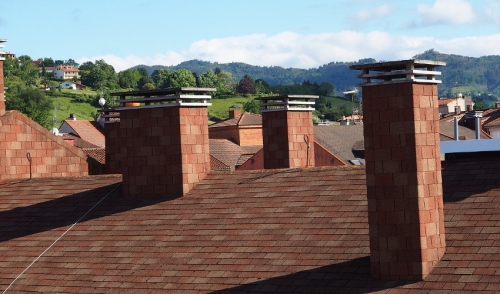
Chimney Cleaning for the DIYer
Chimney Sweeps are just as important now as they were back in their heyday. The old-fashioned, tried and true method of cleaning out your chimney hasn’t changed much since that time. Inspecting your chimney annually and keeping it free of soot and creosote are crucial for preventing chimney fires – or worse – the chance of a house fire.
Depending on your comfort level with climbing a ladder and working from your roof, you could successfully clean your own chimney for less than you would have to pay a professional Chimney Sweep.
Below, we’ll discuss some of the common tools needed and the steps needed for you to clean your own chimney.
Gather your tools
- Chimney Brushes come in a variety of sizes and types, depending on what diameter your chimney is and what material the liner is made of. For a clay flue, a wire brush is recommended. For a metal flue, a poly brush is best for avoiding scratches. Some manufacturers of stainless steel liners will even void the warranty if wire brushes are used.
- Chimney brush rods come in various lengths (from 3 to 6 feet) and are intended to be screwed to each other before they are extended down into your chimney. The brush is attached at the bottom.
- A Ladder
- Metal bucket and shovel to collect the fallen soot.
- Shop-vac to clean up the rest. A fine filter is recommended.
- Dust Mask and goggles are a must. They’ll keep the irritating soot and ash from getting into your eyes and lungs.
- Plastic sheeting and tape to seal off the interior opening of your chimney. Also to protect carpeting and furniture, depending on your situation.
The dirty work
Obviously, you’re going to get dirty and shouldn’t be wearing your Sunday best. The clothes you’d wear while painting or doing any other type of messy work are a must here.
Now, we’ll discuss the most common and least messy method of cleaning your chimney:
- Once you’re ready, grab a tape measure, pencil and paper. Securely place your ladder next to your house and climb up to the roof.
- Take note of the type of flue cap you have and what tools would be necessary to remove it. Next, measure the inside diameter of your chimney liner. That will determine the size of the brush you will need. In addition, see if it is clay or metal.
- Once you’ve gathered the right brush and proper number of rods, make sure you seal off the opening downstairs to prevent soot from entering your home. A glass fireplace enclosure isn’t adequate to keep the fine soot at bay. It is best to seal off the opening with plastic sheeting. Also, spread drop cloths around the interior work area.
- Back on the roof, carefully remove the chimney cap and attach your brush to a length of rod.
- Insert the brush into the chimney, and using an up and down motion, guide the brush down. Try to clean about one foot at a time. Attach additional rods as needed. Make sure they are screwed together tightly so they don’t fall off while your work!
- Continue adding rods and clean until you’ve reached the bottom of the liner.
- Once you are satisfied, pull up the brush/rods and replace the chimney cap.
- Back inside, use the shovel and bucket to remove the bulk of the debris, finishing up with the shop-vac.
If you think you’re up the job, stop in and we’ll set you up with the right equipment for your needs. You’ll save money by doing it yourself and have the peace of mind that comes with a safe, clean chimney. You might even find yourself singing Mary Poppins’ Chim Chim Cher-ee while you work!
